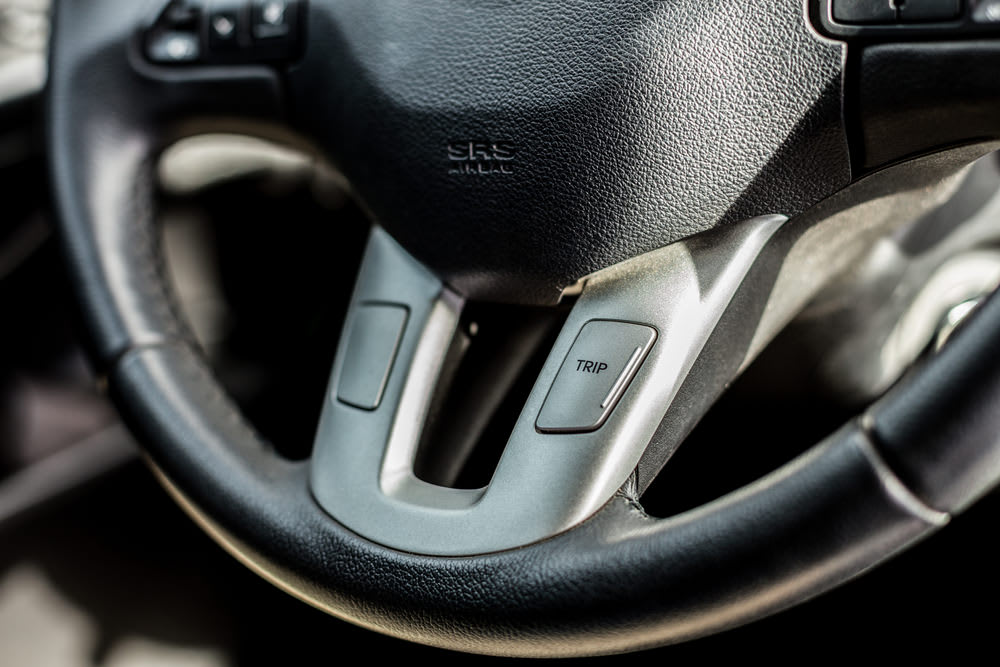

Most people who have been inside of a car are familiar with the steering wheel and what it is used for. Most people who have been outside of a car are familiar with the front wheels and the fact that they can turn to face left or right. Few people actually know how the steering wheel and the front wheels are linked, and fewer still know of the precise engineering it takes to make a modern car handle so predictably and consistently. So what makes all of it work?
From top to bottom
Modern cars use a steering system called rack-and-pinion steering.
A steering wheel sits in front of the driver's seat and is responsible for giving the driver feedback about what the wheels are doing while also allowing the driver to control which direction the wheels are pointed in by turning the wheel. These come in many shapes and sizes and some include airbags and controls for other systems in the car.
A shaft, appropriately named the steering shaft extends from the steering wheel through the car’s firewall. Many new cars have steering shafts that collapse in case of an accident, keeping the driver from being injured severely by the wheel.
-
At this point, a car with hydraulic power steering has the steering shaft run directly into a rotary valve. A rotary valve opens and closes as it is rotated to allow pressurized hydraulic fluid to assist the steering shaft in turning the pinion gear. This makes steering much easier, especially at low speeds and when stopped.
- Hydraulic power steering utilizes a hydraulic pump powered by a belt connected to the car’s engine. The pump pressurizes hydraulic fluid and the hydraulic lines run from the pump to the rotary valve at the base of the steering shaft. Many drivers prefer this type of power steering, both for its practicality and for the feedback of road-feel to the driver. For this reason, most sports cars have used hydraulic power steering or no power steering at all for decades. Recently though, advancements with electric power steering have ushered in a new age of sports cars with electric power steering.
-
If the car, instead, has an electric motor along the steering shaft, then the car is equipped with electric power steering. This system allows more flexibility with where the electric motor can be mounted, making it perfect for retrofitting older cars. This system also does not require a hydraulic pump to function.
- Electric power steering utilizes an electric motor to assist with turning either the steering shaft or the pinion gear directly. A sensor along the steering shaft senses how much the steering wheel is rotated by the driver and will sometimes also sense how much force was used to turn the steering wheel (known as velocity sensitivity). The car’s computer then processes this data and applies the appropriate amount of force with the electric motor to assist the driver with steering in the blink of an eye. While this system is cleaner and lower-maintenance than a hydraulic system, many drivers say electric power steering feels too disconnected from the road and may assist too much in many applications. Electric power steering systems are improving with every model year though, so this reputation is changing.
-
If there is nothing at the end of the steering shaft except for the pinion gear, then the car does not have power steering. The pinion gear sits on top of the steering rack.
- The steering rack is a long metal bar that runs parallel with the front axle. Teeth in a straight line along the top of the rack align perfectly with teeth on the pinion gear. The pinion gear rotates and moves the steering rack horizontally to the left and right between the front wheels. This assembly is responsible for making the rotational energy from the steering wheel into left-and-right motion useful for moving two wheels in parallel. The size of the pinion gear relative to the steering rack decides how many turns of the steering wheel it takes to turn the vehicle a certain amount. A smaller gear means easier turning of the wheel but more rotations to get the wheels turned all the way.
-
At both ends of the steering rack sit tie rods
- Tie rods are long slender connective pieces meant to be very strong only when pushed on or pulled. Force from another angle could easily bend the rod.
The tie rods connect to the steering knuckle on either side and the steering knuckles control the wheels turning left and right in tandem.
Something to keep in mind with the steering system is that it is not the only system in the vehicle that has to move precisely while at speed. The suspension system also does quite a bit of moving, meaning that a turning car going over a bumpy surface had better have a way for the front wheels to move side-to-side and up-and-down simultaneously. This is where ball joints come in. This is a joint that looks like a ball-and-socket joint on a human skeleton. This component allows for the free movement allowing the very dynamic steering and suspension systems need to work in tandem.
Maintenance and other concerns
With so much movement to control under heavy force, the steering system can really take a beating. The parts are meant to handle the weight of the vehicle turning hard at top speed. When things do eventually fail and go wrong, it is usually from long-term wear. Hard bumps or collisions can break components in a more noticeable way as well. A broken tie rod can make one wheel turn and the other stay straight, which is a very bad scenario. A worn ball-joint can just be squeaky and make the steering a bit clunky. Whenever a problem pops up, be sure to have it inspected immediately to ensure the car’s safety and drivability.



